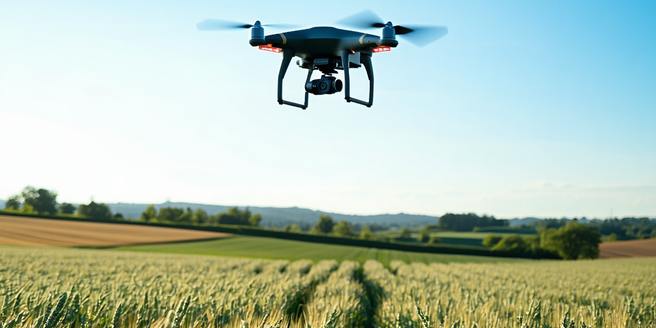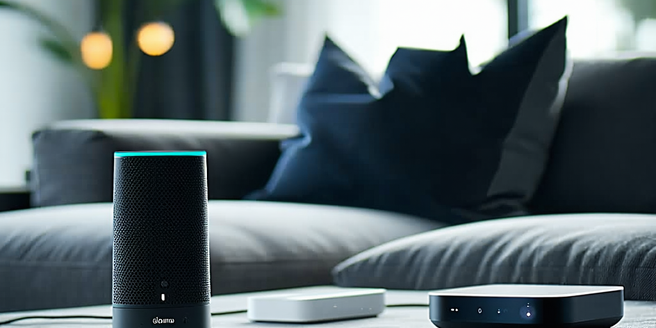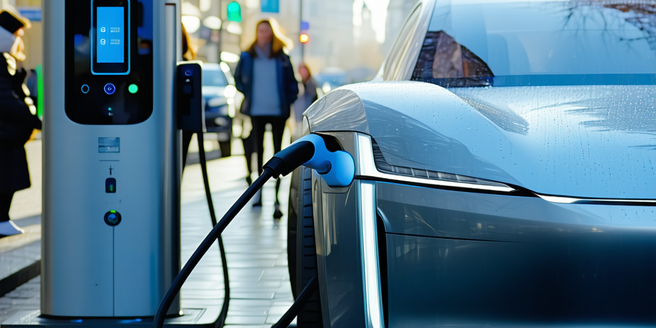
Smart Wearables
Wearable technology has evolved significantly from basic pedometers to advanced smartwatches, fitness bands, and health monitoring gadgets. Modern smart wearables integrate advanced sensors, connectivity options, and artificial intelligence to enhance functionality and personalization. They provide valuable insights into health metrics, aiding in healthier lifestyle choices and efficient time management. Features like heart rate monitoring, sleep analysis, GPS tracking, and smartphone notifications make them indispensable tools for health enthusiasts. However, challenges such as battery life, sensor accuracy, and data privacy persist. Future trends include standalone functionality, improved design, and a focus on secure data handling. As healthcare digitizes, wearables are set to play a crucial role in remote patient monitoring and personal health management.

Smart Speakers With Virtual Assistants
Smart speakers have become integral to our daily lives, thanks to advancements in voice recognition and artificial intelligence. These devices use far-field microphones and natural language processing to understand user commands, aiding in tasks from playing music to controlling smart home devices. Modern virtual assistants enhance convenience with features like reminders, weather updates, and personalized recommendations. They are integrated with smart home systems for control of lighting and security. Smart speakers simplify tasks, enhancing convenience, and providing accessibility benefits. The market features brands like Amazon Echo, Google Nest, and Apple HomePod, each with unique strengths. Choosing the right smart speaker involves considering sound quality, device compatibility, and AI capabilities. Future trends indicate continuous advancements in AI, pushing the boundaries of personal automation.

Timex Smart Style Hybrid
The Timex Smart Style Hybrid Watch elegantly combines classic design with modern trends, making it versatile for any occasion. With a traditional analog appearance integrated with subtle digital features, this watch transitions effortlessly from casual to formal settings. Offering options like stainless steel or leather straps, it provides elegance and durability. Packed with smart technology, it connects to smartphones for notifications, fitness tracking, and more, maintaining a balance between style and function. Notable for its long battery life, it lasts months on a single charge, contrasting with many fully digital smartwatches. Compatible with both iOS and Android, it ensures seamless connectivity. Users appreciate its mix of classic aesthetics and contemporary smart features, making it a highly functional yet stylish choice.

Smart Home Automation Trends
Emerging technologies are transforming smart home automation by integrating Artificial Intelligence (AI) and Machine Learning to create personalized home experiences. Advancements in sensor technology and the adoption of 5G enhance connectivity and energy efficiency, while edge computing improves data processing. Voice control is reshaping home interaction through smart speakers and voice-activated assistants, offering hands-free convenience and accessibility. Sustainable solutions in smart homes focus on energy optimization and waste reduction with smart thermostats, lighting systems, and renewable energy integration. Security enhancements provide peace of mind with real-time monitoring, motion detection, and AI-enabled smart cameras and locks. AI plays a crucial role by learning user behaviors to automate tasks, optimize energy use, and seamlessly integrate with IoT devices. These advancements are setting new standards for operational efficiency, convenience, and eco-friendly living, promoting a safer and more intelligent home environment.

Biometric Security Measures
Biometric security technologies are transforming data protection and security access through unique biological traits like fingerprints, facial patterns, and iris structures. Offering enhanced security due to their difficulty to replicate, these systems become more accurate and affordable as technology advances. Despite their advantages, privacy and data protection concerns must be considered, with compliance to regulations being crucial. Fingerprint scanning and facial recognition are popular due to ease of use and non-intrusiveness, respectively, although each has challenges such as sensor maintenance and data privacy. Iris scanning offers high accuracy and user convenience but is costly and sensitive to environmental factors. Emerging behavioral biometrics focus on identifying users through their unique behaviors, offering continuous authentication, though raising privacy concerns. Despite their effectiveness, biometric security systems face challenges that need addressing as the digital age progresses.

Compact Drones For Aerial Travel Photography
Compact drones have transformed aerial photography, offering accessibility and advanced features to both amateurs and professionals. They are lightweight, portable, and generally more affordable, equipped with high-quality cameras for excellent photos and videos. Key features in photography drones include high-resolution cameras of at least 12 megapixels, 4K video capability, advanced stabilization technology such as a 3-axis gimbal, and long battery life. Compact drones also often feature GPS for enhanced creative control and obstacle avoidance for safety. Popular models like the DJI Mini 2, Autel Robotics EVO Nano+, and Skydio 2+ each offer unique strengths for capturing stunning landscapes. When traveling, ensure to check local regulations for drone use and plan for optimal shooting times during the golden hours. Safety and regulatory compliance are crucial, with an emphasis on understanding local laws, weather conditions, and geofencing to avoid restricted areas. By focusing on these aspects, photographers can maximize their aerial photography potential and capture breathtaking visuals with compact drones.

Smart Home Integration Techniques
Understanding smart home protocols is vital for seamless home automation. Key protocols such as Zigbee, Z-Wave, Bluetooth, and Wi-Fi each have strengths and limitations, influencing device compatibility and performance. Smart home success hinges on selecting devices that align with your specific needs, like security or lighting, ensuring ecosystem compatibility with platforms like Google Assistant or Alexa. Establishing a centralized control hub, such as Samsung SmartThings or Amazon Echo, allows streamlined management and automation of smart devices. Integrating voice assistants like Amazon Alexa or Google Assistant enhances convenience by enabling voice-controlled operations. Prioritizing data privacy and security involves securing networks, regularly updating firmware, and using two-factor authentication. Proactively addressing these elements ensures a secure and efficient smart home environment.

Digital Pens: Writing Meets Technology
Digital pens are transforming how we blend traditional writing with digital technology by converting handwriting into digital data, enhancing productivity, creativity, and environmental sustainability. As essential tools, digital pens feature pressure sensitivity, connectivity options like Bluetooth, long battery life, and compatibility with various software and devices. Leading models such as the Livescribe Aegir, Wacom Bamboo Slate, Apple Pencil, Neo Smartpen N2, and Microsoft Surface Pen each offer unique advantages tailored to different user needs. By reducing the reliance on disposable pens and paper, digital pens contribute to environmental conservation. These versatile tools support efficient workflows and inspire innovation, making them ideal for professionals, students, and artists looking to bridge the gap between analog and digital worlds.

Wearable Technology In Sports Performance
Wearable technology has transformed sports by providing real-time data that enhances training and performance. Devices such as fitness trackers, smartwatches, heart rate monitors, and smart clothing collect valuable metrics like heart rate, speed, and distance, allowing athletes and coaches to optimize training regimens and reduce injury risk. As technology evolves, the incorporation of artificial intelligence and machine learning promises sophisticated analytics and improved sports performance. Wearables offer precise insights into physiology and biomechanics, enabling data-driven strategies for peak athletic performance. Future trends include AI integration, compact devices, advanced sensors, and augmented reality, promising further advancements in sports technology.

Remote Work Communication Strategies
Remote communication presents unique challenges, including maintaining consistent messaging across time zones, overcoming misunderstandings due to cultural nuances, and the absence of non-verbal cues. To address these, companies must establish clear communication protocols and utilize reliable tools, such as video conferencing and project management platforms, to foster seamless interaction. Leveraging technology with real-time collaboration tools is crucial for efficient remote work. Clear communication protocols help define interaction channels and expected response times, enhancing workflow. Fostering team connections through virtual interactions and promoting inclusivity strengthen team morale. Balancing synchronous and asynchronous communication is key to accommodating time differences and preventing burnout, ensuring remote teams remain productive and cohesive.

Innovative Headphone Designs For Comfort
Explore the evolution of headphone ergonomics, focusing on user comfort and innovative design. Discover how modern designs prioritize ergonomics, utilizing anthropometric studies to fit a diverse range of users. Learn about materials like memory foam and lightweight metals that enhance comfort, while adaptive fit technologies ensure personalized fits. Also, understand the role of breathable materials in long-wear comfort and how wireless innovations provide freedom from cords. Finally, see how manufacturers balance sound quality with wearability, using advanced technologies to meet high expectations for both audio performance and comfort.

Electric Vehicle Developments
Advancements in battery technology are revolutionizing the electric vehicle (EV) industry by increasing energy density, reducing charging times, and improving safety features. Solid-state batteries lead the way, promising higher capacities and faster charge cycles. Innovations in materials and R&D investments are driving longer-lasting, efficient, and affordable batteries, boosting EV appeal. Expansion of charging infrastructure is crucial for EV adoption, with governments and companies collaborating to establish fast-charging networks. Ultra-fast chargers and renewable energy integration are set to make EVs practical for long distances and alleviate range anxiety. Government policies and incentives, such as tax rebates and emissions targets, are pivotal in promoting EVs, stimulating economic growth, and reducing emissions. Emerging EV models now cater to diverse consumer needs, offering enhanced performance and cost-effectiveness. The rise of EVs benefits the environment through reduced emissions and supports economic transformation by creating jobs in new sectors, ensuring a sustainable future.